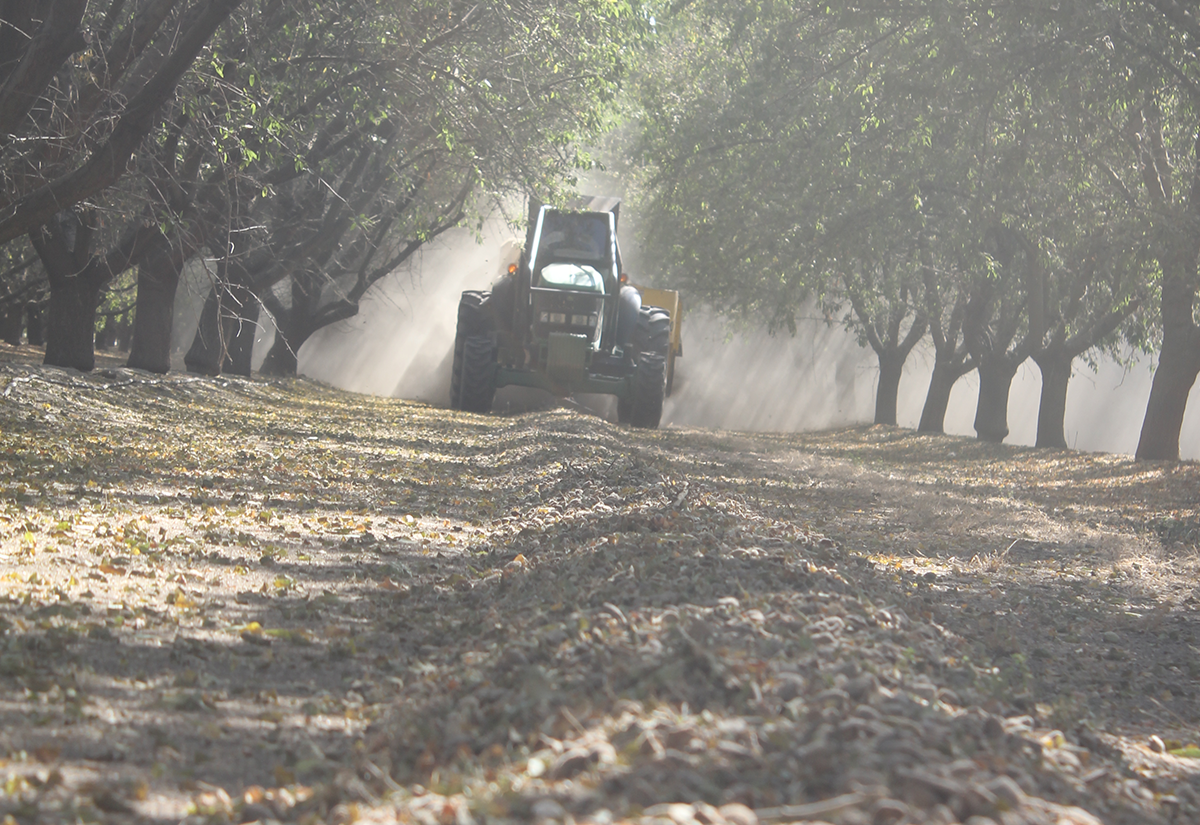
“Reducing dust is always a good thing,” Lucas Avila of Farmland Management Services said during a recent Almond Board of California Training Tuesday.
About 75% of dust generated during almond harvest is attributed to harvest machines picking up windrowed nuts. Conditioning those windrows prior to pickup, Avila said, minimizes dirt and foreign material in the windrows and is one way to reduce dust. There are also savings to be realized in hauling less dirt and debris in the trailers.
Benefits of conditioning have been realized in the last five to 10 years as more emphasis has been placed on dust reduction and delivering a cleaner and drier product to the processor. Conditioning can also help speed up harvest, Avila said. Running windrowed almonds through a conditioner will help nuts dry more uniformly and reduce the time spent on the orchard floor. Conditioning was done in past wet years to speed the drying process in late almond varieties. Now, Avila said, it is seen as a way to be more flexible during harvest. Nuts can be shaken a little green, he said, then windrowed and conditioned to shave off harvest time. In young orchards that may have less smooth and clean floors, conditioning can reduce the amount of dirt and debris in the windrow.
“You can’t slow down with these larger crops, so conditioning really helps move harvest,” Avila said.
Almond harvest dust reduction, one of ABC’s 2025 goals, starts prior to harvest with orchard floor preparation. Cover crops or weeds in the orchard are mowed and orchard middles are floated to create a smooth, firm floor where the crop will dry.
Jesse Roseman, ABC’s principal analyst in environmental and regulatory affairs, said there are several additional harvest practices that can help reduce dust.
Once nuts are on the ground, harvest crews can plan routes through the orchard to avoid blowing dust toward roads or housing. Dust created when blowing nuts into windrows can be filtered from the air by the trees if blown into the orchard.
Adjusting sweeper head height to keep it from digging into the dirt and adjusting the pick-up head on the harvester also contribute to dust reduction. As more self-compatible almond varieties come into production, single harvest means less dust is generated.
Slowing equipment speeds through the orchard is another proven dust reduction tactic, but in reality, Avila said, harvest crews are pressed to move to the next variety.
















